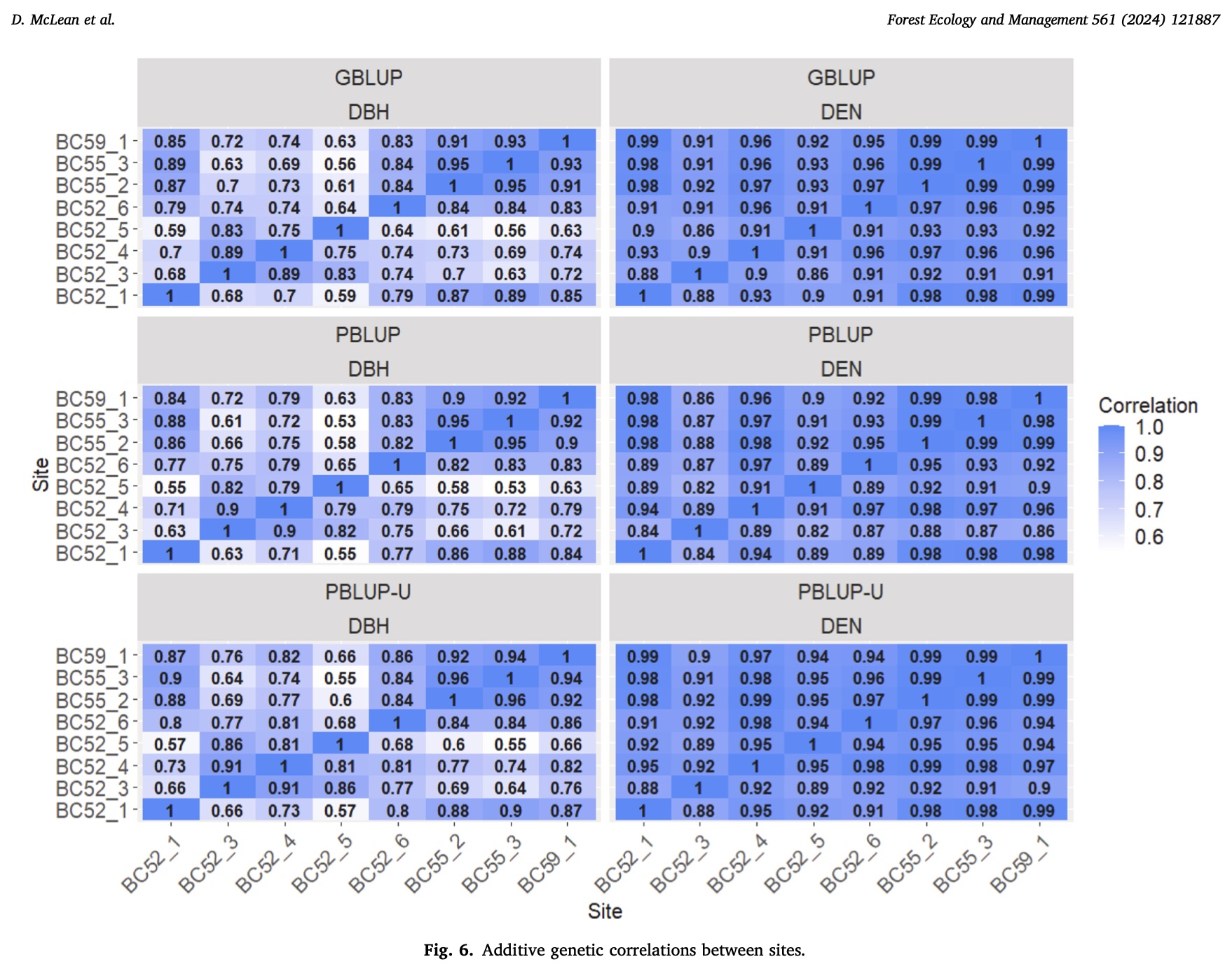All that glitters (still) is not GxE interaction
Five months ago I was saying all that glitters is not GxE interaction, putting forward the idea that, at least in forestry, some of the reported GxE interaction was not interaction at all but poor connectedness.
Today Forest Ecology and Management published the work by Duncan McLean (our PhD student, congratulations!), Jaroslav Klápště, Mark Paget and myself (Open Access article). We have eight well-replicated and connected trials, SNP-based pedigree, covering a range of environmental conditions with little signs of interaction.
For wood basic density, a typically highly heritable & low interacting trait, out of the 28 cross-site genetic correlations (Type B in forestry parlance) the lowest value was 0.86. For stem diameter at breast height, a typically low heritability & high interacting trait, 20/28 cross-site correlations were greater or equal to 0.7, often used to define interacting sites. The lowest correlations came from a single South Island site (lowest value was 0.59).
Trees live for a long time and tree breeding programmes are long-lived endeavours. Our genetic evaluations often include trees from many selection series, with many trials connected by tenuous relationships. There are publications that show we only need small connections to compare genotypes across trials: the predicted error variance of the comparison is OK. We need to remember though, that those comparisons are assuming we know the true genetic correlations across sites (as in animal breeding); instead, we are estimating them from data. Data coming from poorly connected trials, subject to biases.
Now imagine we start explaining the estimated GxE interaction, Are we explaining real interaction or just estimation noise? We still have to continue revisiting this topic, which I hope it leads to updating the genetic evaluation system.
